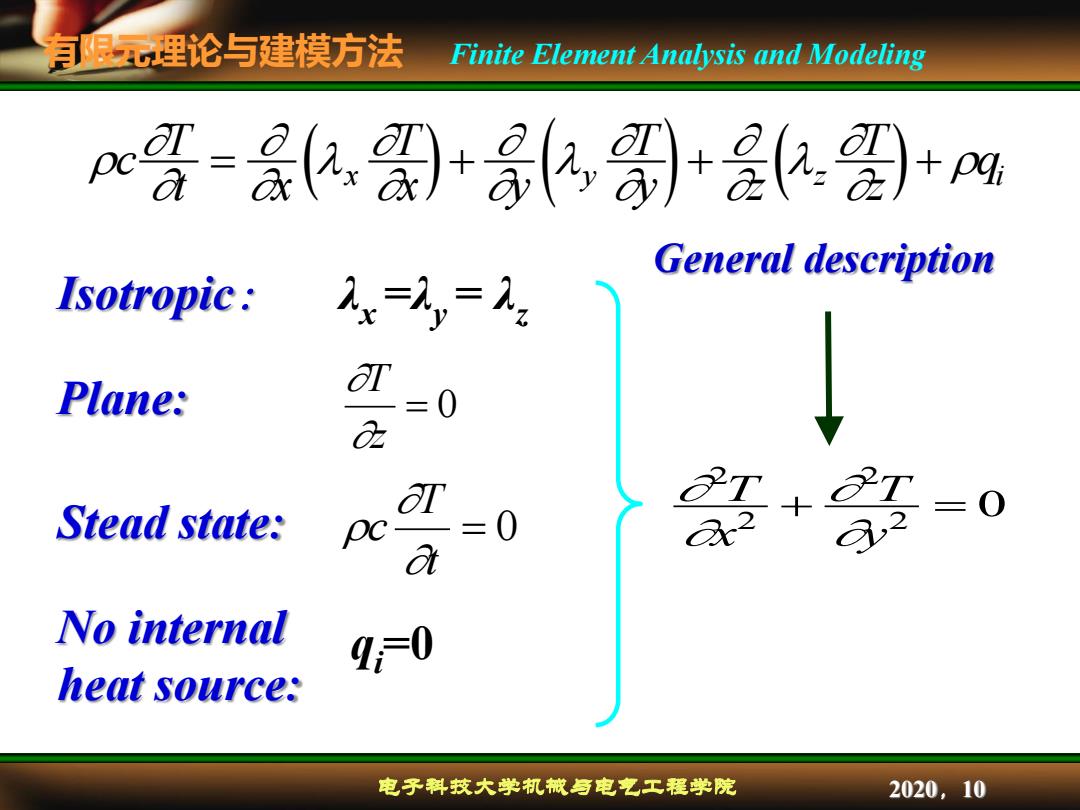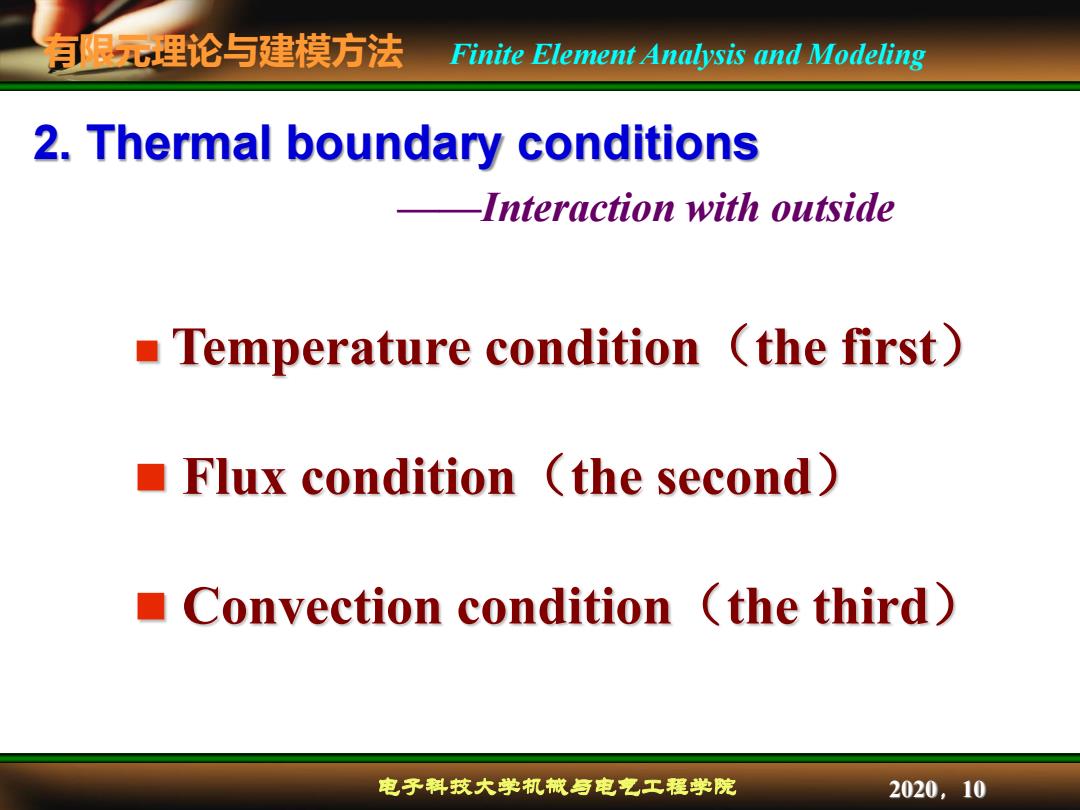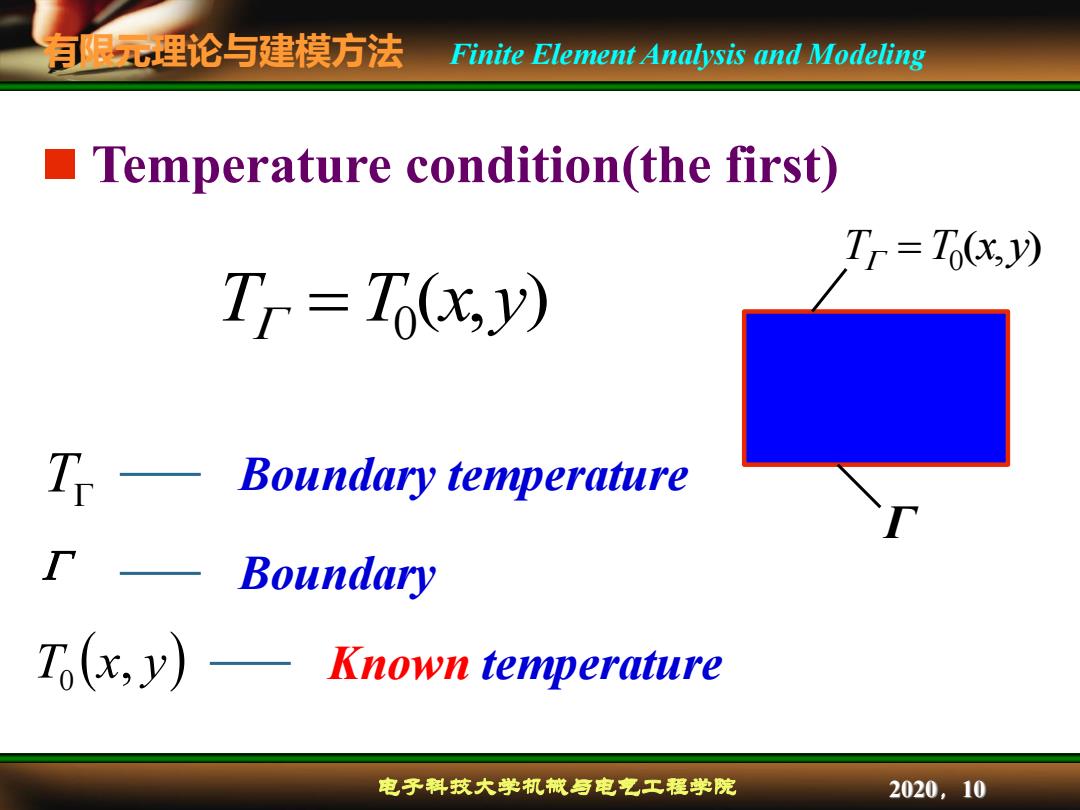
有限理论与建模方法 Finite Element Analysis and Modeling Differential Equation of Heat Conduction 比热容 热传导系数(导热系数) 内部热源 x宫-,黑)+,+4 +P9 温度升高需 从三个方向传递 内部产生 要的热量 进来的热量 的热量 热平衡方程 电子科技大学机械与电气工程学院 2020,10
有限元理论与建模方法 电子科技大学机械与电气工程学院 Finite Element Analysis and Modeling 2020,10 c T t x T x y T y z T z x y z qi Differential Equation of Heat Conduction 热平衡方程 比热容 热传导系数(导热系数) 温度升高需 要的热量 从三个方向传递 进来的热量 内部产生 的热量 内部热源

有限理论与建模方法 Finite Element Analysis and Modeling =.黑)+(,别+)+ General description Isotropic: x= =2 Plane: T 0 2 ar 子T Stead state: 0 a No internal heat source: 电子科技大学机械与电气工程学院 2020,10
有限元理论与建模方法 电子科技大学机械与电气工程学院 Finite Element Analysis and Modeling 2020,10 c T t x T x y T y z T z x y z qi Isotropic: λx =λy = λz qi =0 0 z T 0 t T c Stead state: Plane: No internal heat source: 2 2 2 2 0 T x T y General description

有限元理论与建摸方法 Finite Element Analysis and Modeling 2.Thermal boundary conditions -Interaction with outside Temperature condition (the first) Flux condition (the second) Convection condition (the third) 电子科技大学机械与电气工程学院 2020,10
有限元理论与建模方法 电子科技大学机械与电气工程学院 Finite Element Analysis and Modeling 2020,10 2. Thermal boundary conditions ——Interaction with outside Temperature condition(the first) Flux condition(the second) Convection condition(the third)

有限理论与建模方法 Finite Element Analysis and Modeling Temperature condition(the first) Tr=To(x,y) T=Ti(x,y) T Boundary temperature Boundary T(x,y)-Known temperature 电子科技大学机械与电气工程学院 2020,10
有限元理论与建模方法 电子科技大学机械与电气工程学院 Finite Element Analysis and Modeling 2020,10 Temperature condition(the first) T T x y 0 , T T x, y 0 Boundary temperature Boundary Known temperature T T x y 0 , Γ

有限理论与建模方法 Finite Element Analysis and Modeling Flux condition(the second) 90 ),=% λ 热传导系数 40 —已知热流密度 分8 电子科技大学机械与电气工程学院 2020,10
有限元理论与建模方法 电子科技大学机械与电气工程学院 Finite Element Analysis and Modeling 2020,10 Flux condition(the second) T n q 0 —— 热传导系数 q0 —— 已知热流密度 Γ 0 q